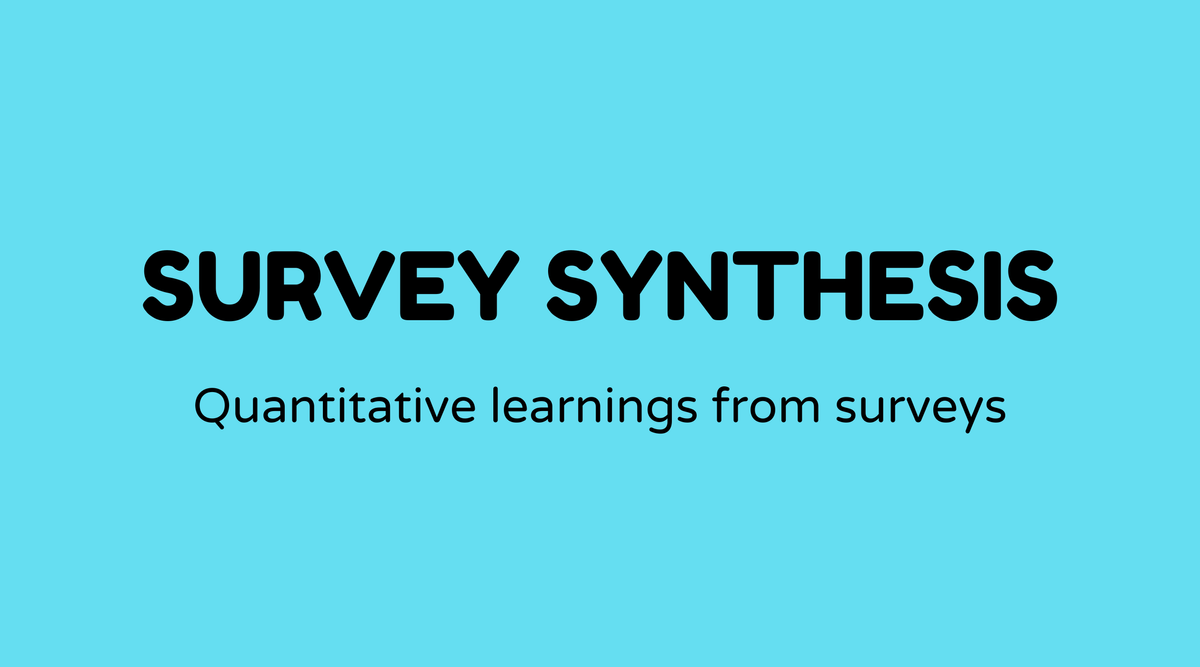Survey synthesis

Overview of Survey Synthesis
Have you ever faced a large collection of survey data and felt uncertain about how to proceed? This is where survey synthesis comes into play. Simply defined, it refers to the process of taking diverse survey responses and weaving them into a coherent narrative. This is essential for businesses, researchers, and decision-makers who wish to extract meaningful insights from raw data. Through survey synthesis, connections are made, yielding a clear and actionable interpretation of the information.
Why Survey Synthesis Matters
In the modern era, data is highly valuable—but in its unrefined state, it holds little meaning. Survey synthesis converts collections of responses into significant narratives. It aids organizations in making well-informed choices, strategizing wisely, and aligning their goals with the real needs of their target audience. Rather than merely presenting figures, synthesized surveys uncover trends and patterns that might be overlooked.
It enhances communication with stakeholders, ensuring that everyone shares an understanding. Moreover, well-organized data is far simpler to present and comprehend, whether updating a corporate board or sharing findings at a conference.
What is Survey Synthesis
Survey synthesis entails a structured approach to analyzing and summarizing survey data. It's more than just tallying responses; it involves grasping the context and significance of those responses. By merging quantitative data with qualitative insights, a comprehensive overview of the survey results is created. This process typically includes several phases: data cleaning, coding open-ended responses, statistical analysis, and thematic grouping.
By employing these methods, survey synthesis renders the data useful for decision-making. For example, if a company distributes a customer feedback survey, instead of merely stating that 70% of customers are satisfied, synthesis would examine the reasoning behind these satisfaction levels, offering actionable insights.
How to Conduct Survey Synthesis
Executing survey synthesis involves several key steps:
-
Data Cleaning: Begin by removing inconsistencies or errors from your dataset to secure accuracy in your findings.
-
Collation and Coding: Organize similar responses or significant themes together. Coding is especially important for managing open-ended responses.
-
Qualitative and Quantitative Analysis: Utilize statistical tools for numerical data and thematic analysis for textual information. This combined method provides a thorough perspective.
-
Identify Patterns and Insights: Search for trends, patterns, and noteworthy insights that arise from the data.
-
Report and Visualization: Convey your findings clearly and concisely, often with visual aids like graphs or charts to enhance understanding.
In practice, software tools like NVivo or Tableau can be beneficial in the synthesis process.
Examples of Survey Synthesis
Let’s look at some real-world applications. An educational institution might survey student satisfaction. Through survey synthesis, they could discern not only overall satisfaction levels but also specific areas such as instructor effectiveness or campus facilities needing enhancement.
Another instance is market research for a new product. By synthesizing survey responses, businesses can identify what potential users genuinely value about the product, facilitating improvements before it launches.
FAQs
How is survey synthesis distinct from standard data analysis?
Survey synthesis integrates both quantitative and qualitative data to create a narrative, while traditional data analysis may focus solely on numerical data.
What tools can facilitate survey synthesis?
Applications like NVivo for qualitative analysis and Tableau for data visualization are commonly utilized.
Can survey synthesis be performed manually?
Yes, but it may require considerable time. Software can significantly improve accuracy and efficiency.
How do you ensure the data remains unbiased during synthesis?
Maintain neutrality by employing structured methodologies and diverse data sources to affirm trends.
What skills are necessary for effective survey synthesis?
Analytical abilities, experience with data analysis tools, and the ability to interpret both qualitative and quantitative data are crucial.
Is survey synthesis applicable to any type of survey?
Certainly—whether it’s customer feedback, employee satisfaction, market research, or academic surveys.



